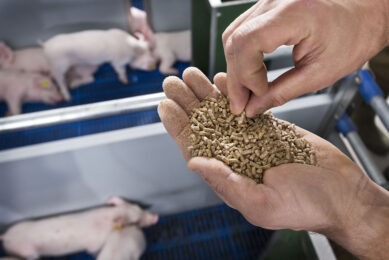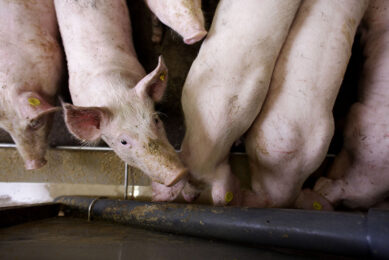The changing face of feed quality testing

The latest developments in NIR spectroscopy are set to place real-time and in-line analysis of feedstuffs and diets, advances are resulting in more compact and affordable NIR devices which can be built into feed production lines or even made portable, Dr Casey Bradley explains what these developments could mean for the industry.
The past decade has seen considerable advances in the precision with which we can apply nutrition strategies to swine of all ages. Whenever I take the time to look back, I’m always struck by the sheer rate of development in recent years. Yet confirming diet formulation accuracy still mostly relies on the same time-consuming and costly laboratory-based analyses that have been used for decades. The same is true when attempting to monitor the feedstuff variability which can undermine those formulations or assessing the physical characteristics of the diet that affect feed efficiency, such as particle size. The time and cost involved also restricts both frequency of testing and the sample size – not good for accuracy!
So it’s big news that this is all set to change, and in a major way.
Potential for finetuning diet formulations
The latest developments in near infrared (NIR) spectroscopy are set to place real-time and in-line analysis of feedstuffs and diets within reach of even the smallest feed manufacturer or swine producer. Advances in both software and hardware are resulting in more compact and more affordable NIR devices that can be built into feed production lines or made portable (even hand-held) for use on-farm. New NIR calibrations are moving beyond basic proximate analysis to provide instant monitoring of physical feed characteristics, including particle size.
What does this mean for the industry? It means immediate accurate results, with the ability to test more frequently at a lower cost. This opens up the potential for fine tuning diet formulations to account for feedstuff variation from batch to batch or for final feed quality control testing to instantly highlight issues in need of correction. This can help improve the consistency of feed going on to the farm so that it is closer to the nutrient requirements of the pig, optimising on-farm pig performance.
NIR has the potential to be developed for new opportunities
Research by Kansas State University has shown the importance that cereal particle size has on pig performance with a 1% improvement in finisher pig FCR associated with a 100 micron size reduction in cereal particle size. The importance of cereal particle size has led to a project, that I have been fortunate to be involved in, examining the potential of using hand-held NIR for determining corn particle size with promising results leading to further testing in this area. If successful it could lead to more frequent corn particle testing on site. This is an example of how NIR has the potential to be developed for new opportunities while still being important in determining more fundamental nutrient values such as the energy of corn.
The ability of using NIR as a cost effective way of testing hundreds of corn samples across the US for energy allows for an effective comparison of corn crops from year to year.
Read also: Reducing costs with smaller particle size
Grinding yellow dent corn to a finer particle size can help producers reduce feed costs by enable pigs to derive more energy from the corn, new US research indicates.
It’s clear that new opportunities are emerging to significantly advance feeding precision, feed efficiency and producer profitability. I, for one, will be grabbing it with both hands!
Join 18,000+ subscribers
Subscribe to our newsletter to stay updated about all the need-to-know content in the pigsector, three times a week. Beheer
Beheer










 WP Admin
WP Admin  Bewerk bericht
Bewerk bericht